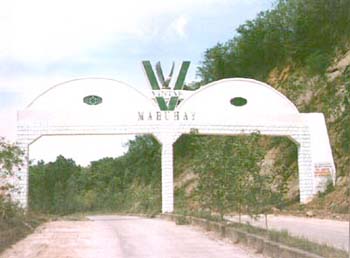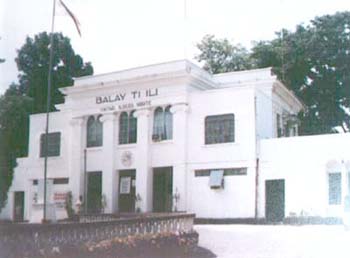

| Municipality of VINTAR |

The history of Vintar is rich with the achievements of her sons and daughters whose undying love, unity and devotion to duty made Vintar what is today - of their scarifies so that we who are alive today may live the lives of freeman in a free country. Vintar was coined from the word "intar" which means "order". A missionary priest who incidentally came upon the village was very much impressed by the peace, unity, order, hospitality and affectionate dealings of the first inhabitants of this town. Prefixed the letter "V" which is heartshaped, as a symbol of the hospitality and goodwill of the people, to the word "intar", thus forming its present name Vintar. Vintar, therefore stands for order, unity, peace and hospitality. In the middle of 1574 after naming the locality Vintar, a Spanish soldier name Leano, who was assigned as the encomendero, organized the "pueblo" of Vintar by laying out streets and houses in the present poblacion. During the organization of civil government under the American regime in 1901, the financial condition of Vintar was not sound so it was annexed to Bacarra. Conscious of the reasons of its annexation, prominent leaders of Vintar combined their efforts in improving the financial status of the town thus giving birth to its independence in 1909. Since then, a great number of prominent leaders contributed to the development of Vintar particularly in the field of agriculture where the municipality is best suited to.
In 1938, Mr. Pedro Agbayani was elected the first Municipal Mayor of Vintar followed by Atty. Juan Foronda but his term was cut short because of the outbreak of World War II. The people of Vintar re peace loving. They cherish the freedoms their forefathers fought and died for. One time, Vintar was adjudged the most peaceful town in the province. They are united and the "bayanihan" or "tagnawa" is practiced among themselves. They are thrifty, industrious and adventurous. Like many other Ilocanos they strike everywhere. Vintarinians are found in almost every corner of the world like Hawaii, America, Australia, Saudi Arabia, Iraq, Iran, Hongkong and Europe. These Vintarinians who are abroad help in the economic growth of Vintar because of the dollar they send their families back home. The future of Vintar is bright because her people are civic conscious of the noble ideals and high traditions her people had always lived by, a heritage which they will be proud to leave to their children and children's children. If Vintar has a glorious part to look back on, it has an equally great present to be proud of. Vintar of tomorrow is a vivid picture of the dreams, hopes and aspirations to the people of Vintar today which through their united efforts, industry, patience and hard work will place Vintar alongside her progressive sister towns in the Philippines. Vintar embraces 33 barangays, 5 of which are in the poblacion. A main arterial road connects the other 28 rural barangays with the poblacion. The sources of livelihood of its resident are farming, fishing and some backyard industries. It is a town fringed with green foliage, verdant hills and mountains. Vintar has common boundaries with the municipalities of Adams, Dumalneg, Bangui, Burgos, Pasuquin, Bacarra, Laoag City, Sarrat, Piddig and the province after portions of Nueva Era were added to the Municipality of Marcos. It occupies more or less than 48,935 hectares. |






